Following the government guidelines and information from our sports governing bodies, Noel MacKenzie, one of our well known sports turf consultants, offers some of his own advice to help sports clubs and golf courses have a better understanding of what they can do during this crisis.
Noel is principal consultant and director of Sports Turf Consulting, a business he started in 2003. His aim is to provide advice to sports turf facility managers and their owners on the management, maintenance and construction of turf facilities in both the public and private sectors. This includes routine maintenance, agronomy, construction and design & resource management.
Noel has worked for various consultancies including, Gillespies Landscape and Ecology Practice, ADAS, Sports Turf Research Institute (STRI Limited), Grass Science (Division of the RT Group), TurfTrax (TGMS) Limited. - Laurence Gale, TurfPro editor
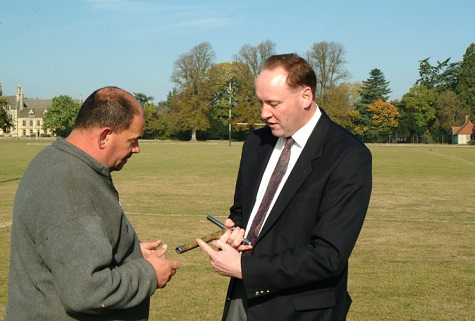
Noel MacKenzie seen right
INTRODUCTION
“Besides the noble art of getting things done, there is the noble art of leaving things undone. The wisdom of life consists in the elimination of non-essentials.” - Lin Yutang
At the time of writing I have been busy amending reports to clients and updating them via email but I wanted to do more for the industry as a whole.
We have learned that the lockdown has been extended and for the last few weeks I have been liaising with clients and contacting industry governing bodies offering support and input on suggested guidelines. The driving rationale on this is that sooner or later lockdown will end and when that happens it is important that the businesses and clubs can become operational again very quickly therefore some maintenance is going to be required. It is anticipated that sports like golf and fishing may be some of the first to face relaxation on social distancing so we need to adopt a “holding pattern” to ensure we, as an industry, are ready for this situation when it arises.
There has been a range of operations going on out on the ground with some venues not really changing operations that much and others shutting down all together. The following is my consideration and suggested definition of “essential maintenance” for golf clubs and sports ground facilities. This has been offered in slightly different ways for input or adoption to Industry member’s organisations (BIGGA and GMA) to help form a universal policy on essential working practices in discussion with sports governing bodies and government departments.
It is stressed that this article is not intended to be an absolute guide to safe working practice around Covid19 and further Government and Health Service sources should be engaged to confirm best practice. What is intended is to serve as a thought provoking read and help develop consensus. Ultimately we need to protect our assets through this period, be it staff or the facilities themselves.
The needs of golf clubs/courses and sports grounds are obviously different, but they also have many similarities, the greatest of which is that the people working on site need protecting and supporting. The people who manage and maintain the sites are an important asset since they hold knowledge and are a valuable resource and it is incumbent on all employers to exercise a duty of care for its workers and follow requirements under the Health and Safety at Work Act 1974 and all subsequent legislation. For those furloughed away it is important that they are not forgotten or that valuable resource may be lost forever and ideally we want them back! Managers should stay in touch during lockdown and possibly consider arranging training or at least communication and engagement at some level. Managers may also need to consider the impact of the Lockdown on psychological health too. This situation of lockdown may continue for some time, probably months, and it is clearly a developing one.
Staff Wellbeing: The Most Important Element
Managers must conduct a Risk Assessment of all staff working practices and behaviours assessing risk of virus transfer and exposure.
Particular measures likely to be necessary are:
- Less work will be required on courses doing only essential work so smaller work teams are likely to be necessary.
- An action plan for a worker becoming sick/injured during work is required. First Aid personnel need to be aware of the new risk.
- Ensure workers maintain social distancing in the work place and always maintain a minimum 2metre distance from each other.
- Ensure staff work independently.
- Where possible individual machines should be allocated to identified workers.
- All machinery operating contact areas will be washed down with detergent based cleaning solution and, if possible, antiviral (not antibacterial) cleaner.
- Walky-talkies/radios are a particular risk and shall be individually assigned and wiped with antiviral cleaner at the beginning and end of shifts. If possible chargers shall be separated and taken to workers homes to avoid cross contamination.
- Staff should wear gloves as far as is possible.
- Communal areas should be closed and staff should bring all the following items in individually:
Work clothing
Food
Drinks
Eating and drinking implements.
- Working entry and exit points where community contact is likely to take place shall be wiped down at the beginning and end of the day and at the beginning and end of all breaks.
- Breaks should be taken in isolation/ deploying social distancing.
- Lone working shall be carefully monitored and staff “check–ins” completed on at least hourly intervals if undertaking any activity alone.
- Toilet areas shall be fully stocked with soap and have hot water available and each user to sanitise the handle and seat and doors and taps on each occasion used.
- Any enclosed areas shall be as well ventilated as possible.
- Tool stations are a risk area and workers will need to sanitise any communally used tools and generally use gloves. Ideally each worker should have their own tools for common use items.
- Footpaths and community access routes through the golf course may place a duty of care to sterilise gate fastenings and erection of Covid19 good practice guidelines.
- Managers will have to take an active role managing workers not leave them to their own devices or engage in other work – management of staff must be their priority.
- Managers may also have to account for mental health anxiety around staff coming to work for a variety of reasons. Workers should not be coerced or pressured into working if they are uncomfortable with the situation.
- All staff must report any symptoms and follow government and Health Service advice if unwell regarding self-isolation and disease control measures.
- All persons should act as if they have and carry the virus, rather than being free from it so the duty is to avoid spreading the illness rather than simply personally avoiding it, thus prevention is also avoidance.
Whilst that covers general working practice to some degree we also need to consider what comprises “Essential Maintenance” for both golf courses and sports grounds. To do so we also need to understand that sports turf facilities cannot endure a “no maintenance” scenario as these are a “living thing” and stopping maintenance is really not a viable option except in the most critical circumstances.
Golf Course Maintenance
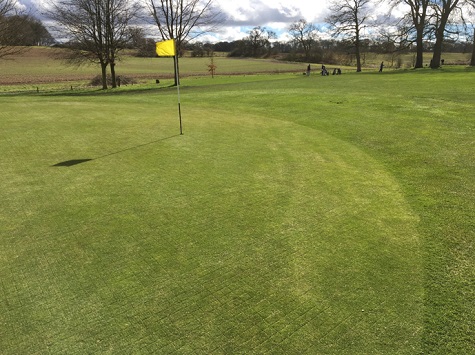
Inevitably all golf courses will take a financial “hit” from the closure to play. In order that golf courses do not fail completely as businesses it is essential they maintain some basic maintenance to sustain their courses in that “holding pattern” so they can be bought back to performance surfaces in future.
Golf courses have to be maintained or they will deteriorate fast and be unable to reopen for months when the lock-down lifts. Indeed, our view is if the course receives no maintenance they will fail as businesses or take months to get back on an operational basis. The “holding pattern” of maintenance at a lesser input level is necessary to:
- Maintain the surface viability of playing areas, especially greens which are highly vulnerable and costly to restore if they fail.
- Cut costs as far as reasonably possible.
- Limit working hours to the absolute minimum (and therefore worker exposure and minimising labour costs).
- Reduce biotic pressure on the grass plants thereby reducing the risk of disease and other problems that cause long term damage.
- Allow courses emerge from a “holding pattern” able to offer compromised playing facilities within two days of Lock Down being lifted.
- Kept in such condition that the businesses are able to provide customer experience of near normal playing conditions within two weeks of Lock Down being lifted.
The following list is the items that we consider to be essential maintenance in order to hold a course in a “holding pattern” for the summer months until around September:
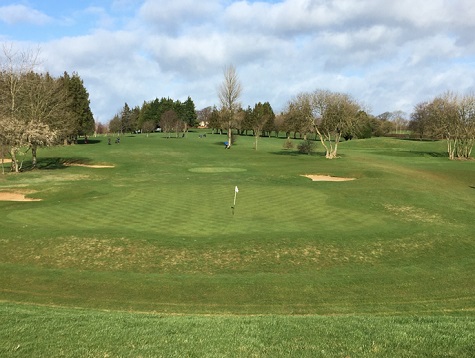
Greens – essential areas
- Mowing - completed at 6-8mm on three occasions per week (also reduce water demand).
- Growth retardant – apply trinexapac-ethyl as per maker’s instructions.
- Verticutting/light scarifiying 2x month to avoid accumulation of pathogen harbouring thatch in the sward and upper rootzone which may lead to disease breakout.
- Rolling (triple mounted)– 1-2 x per month – necessary to maintain surface firmness due to lack of foot and mechanical traffic and essential for maintaining surface smoothness to allow close mowing.
- Sarrel spiking to maintain irrigation efficiency and reduce water wastage.
- Wetting agent application 1 x month – to combat rootzone hydrophobicity and reduce water wastage.
- Fertiliser – site dependent, but some routine spring/summer fertiliser will be needed. As a universal “catch-all” approach maybe a liquid feed urea based (12-20% N content) applied monthly with wetting agent. There is no reason to divert from the normal fertiliser programme if staffing allows and inputs reduced potentially.
- Significant pest/disease management e.g. moles, disease, serious weed infestation, etc. (applies to all areas)
Note: The above list can be reduced further. but this will lead to a reduction in ability to recover greens after lockdown is lifted and may lead to longer term issues and costs accumulating.
Tees/surrounds/semi-rough/quality landscape areas
- Mowing - can be completed one occasion per week at 15-18mm.
- Growth retardant – apply trinexapac-ethyl as per maker’s instructions.
- Fertiliser – controlled release input of around 15-28% nitrogen released over 5-6 months.
Fairways
- Mowing - can be completed at 15-20mm one occasion per week
- Growth retardant – apply trinexapac-ethyl as per maker’s instructions.
Rough/paths and lower importance landscape areas
- Mowing - can be completed one occasion per fortnight at normal cutting height
Essential Maintenance
- Irrigation system spring preparation is essential in our opinion, as are repairs to such systems.
- All machinery must be maintained in a safe, fully functioning condition and be fit for purpose.
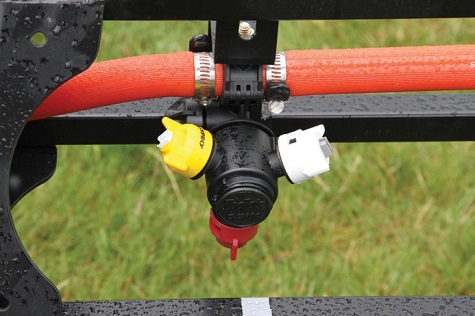
Non- essential works
- All other areas, e.g bunkers, etc., are non-essential unless a significant Health and Safety risk is identified (bearing in mind the course is closed therefore risk exposure must be relevant). Consider areas like ditch maintenance too where blockages could cause wider problems.
- Typical greens maintenance e.g. aeration (except for surface sarrel spiking of greens), topdressing, application of supplements e.g. seaweed, etc., renovations. Practice areas (excluding practice greens), ditches, bunkers, etc., are considered non-essential.
- Spaying is recommended as a labour effective way of undertaking several tasks at once including wetting agent and fertiliser application although this may draw comment since it is a very visible activity. Nevertheless the sprayer is a great way of combining a number of applications at the same time to save time and effort.
- If disease or pest spraying is undertaken PPE involved in pesticide use must be sanitised and/or disposed of after use and, if retained, only used by one operator thereafter.
Sports Ground Maintenance: Bowls, Croquet, Cricket, Tennis, Football, Rugby, Equestrian
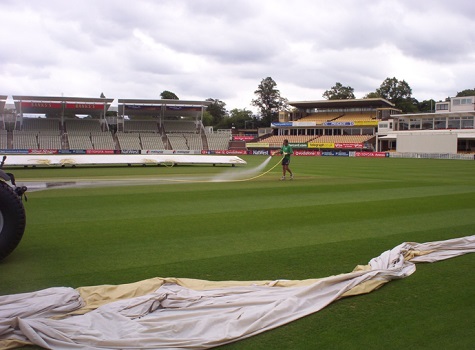
As with Golf it is Inevitable all facilities will take a financial and deterioration “hit” from the closure to play and use. In order that facilities do not fail completely as businesses it is essential they maintain some basic maintenance to sustain their surfaces in a “holding pattern” so they can be bought back to performance surfaces in future. A “holding pattern” of maintenance at a lesser input level is necessary to:
- Maintain the surface viability of playing areas, especially bowling greens, cricket tables & outfields, grass tennis courts, high quality winter sports turf pitches but also lower standard facilities in parks and schools – all of which are highly vulnerable and costly to restore if they fail.
- Avoid long term deterioration of “soil hardness based” sports where thatch presence is highly detrimental to the condition of the surface, this being especially true of cricket, tennis, croquet lawns and bowling greens.
The following lists the items that I consider to be essential maintenance on each type of surface in order to hold a surface in a “holding pattern” (subject to advice from governing bodies):
Bowling Greens and very high standard croquet lawns
- Mowing - at 6-8mm on a maximum of 3 occasions per week (also reduce water demand).
- Growth retardant – apply trinexapac-ethyl as per maker’s instructions.
- Verticutting/light scarifiying 2x month (single pass) to avoid accumulation of pathogen harbouring thatch in the sward and upper rootzone which may lead to disease breakout.
- Sarrel spiking 1 x month to maintain irrigation efficiency and reduce water wastage.
- Wetting agent application 1 x month – to combat rootzone hydrophobicity and reduce water wastage.
- Fertiliser – ideally this should be site dependent. Routine spring/summer fertiliser: ideally a liquid feed urea based (12-20% N content) applied monthly with wetting agent OR a spring/summer minigranular fertiliser e.g. 8-12% Nitrogen applied at 25-35g/m2 would cover many situations.
- Significant pest/disease management e.g. moles, disease, serious weed infestation, etc.
- Irrigation – as little as possible.
Note: The above list can be reduced further, but this will lead to a reduction in ability to recover green after lockdown is lifted and may lead to longer term issues and costs accumulating.
Cricket Tables, Grass Tennis Courts, croquet lawns
- Mowing - can be completed one occasion per week at 12-15mm, clippings removed.
- Growth retardant – apply trinexapac-ethyl as per maker’s instructions.
- Verticutting/light scarifiying 1x month to avoid accumulation of pathogen harbouring thatch in the sward and upper rootzone which may lead to disease breakout.
- Fertiliser – Apply as needed to maintain turf condition and health which is ideally site and surface specific. As a basic recommendation products mentioned for the bowling green (see above) would suffice or use minigranular 11:5:5 spring/summer fertiliser applied at 30-35g/m2.
- Significant pest/disease management e.g. moles, disease, serious weed infestation, etc.
- Irrigation – as little as possible.
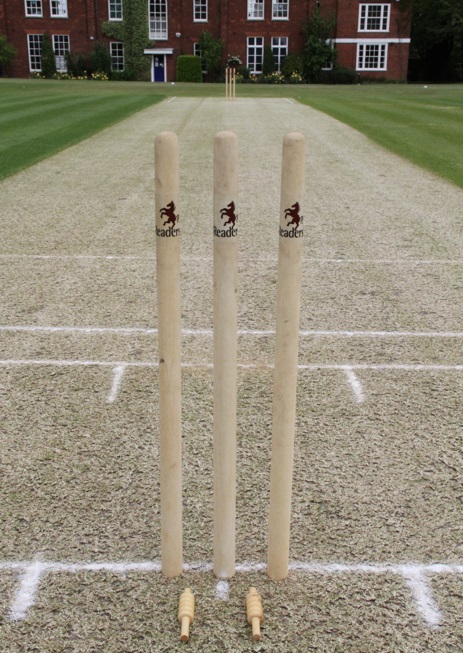
Cricket Outfields, football pitches, rugby pitches, grass hockey pitches, polo pitches, etc.
- Mowing - can be completed at 20-50mm one occasion per week, height dependent on sport.
- Due to the timing of lockdown winter pitches are in need of renovation, but this is unlikely to be possible as a full process. If stocks are already held of grass seed this should be drill seeded into pitches to ensure they are in optimal condition for the start of next playing season. If this is not possible stocks of seed should be placed in a cool, dry environment for use at a later date.
- Growth retardant – apply trinexapac-ethyl as per maker’s instructions (optional).
- Fertiliser – Apply as needed to maintain turf condition and health. This should ideally be site and surface specific. As basic recommendation products mentioned use a 5-6 month controlled release fertiliser between 18-28% nitrogen content e.g. PolyPro/PolyPro SK, Sierrablen, Multigreen, Polyon or similar or use minigranular 12:6:6 spring/summer fertiliser applied at 30-35g/m2. Use of conventional fertiliser may be appropriate but it will be more labour intensive.
- Significant pest/disease management e.g. moles, disease, serious weed infestation, etc.
Race Courses
- These should be maintained approximately as normal with regard to mowing (typically 100mm 4”) and routine thatch management but other treatments are largely unnecessary if there is no use.
- Significant pest/disease management e.g. moles, disease, serious weed infestation, etc.
Essential Maintenance – Site Hardware
- Irrigation system spring preparation is essential in our opinion, as are repairs to such systems. Irrigation is an essential part of the maintenance of fine turf.
- All machinery must be maintained in a safe, fully functioning condition and be fit for purpose.
Non- essential works
- All other areas are non-essential unless a significant Health and Safety risk is identified through risk assessment (bearing in mind the facility is closed therefore risk exposure must be relevant). Consider including landscape areas where long grass may impair vision at a road junction or site entrance for example or ditch maintenance is needed to ensure no blockages in water courses, etc.
- Typical maintenance e.g. aeration, topdressing, application of supplements e.g. seaweed, etc., Practice areas (excluding practice greens), ditches, bunkers, etc., are considered non-essential.
- Spaying is recommended as a labour effective way of undertaking several tasks at once including wetting agent and fertiliser application although this may draw comment since it is a very visible activity.
- If disease or pest spraying is undertaken PPE involved in pesticide use must be sanitised and/or disposed of after use and, if retained, only used by one operator thereafter.
Summary
Please remember this is not “official advice” but an indication of the information offered to assist organisations in to form policy guidance on what is reasonable “essential maintenance".
It is stressed that it has been compiled with the best information the author has available and this is not an absolute guide to safe working practice around Covid19 therefore further Government and Health Service, Industry bodies and Sport’s governing bodies sources should be engaged with to confirm best practice.
Noel R.K. MacKenzie B.Sc.(Hons), MBPR, RIPTA
Director and Principal Consultant
Sports Turf Consulting Ltd
Tel: +44 (0)7739 505862
Email: info@sportsturfconsulting.co.uk
Web: www.sportsturfconsulting.com